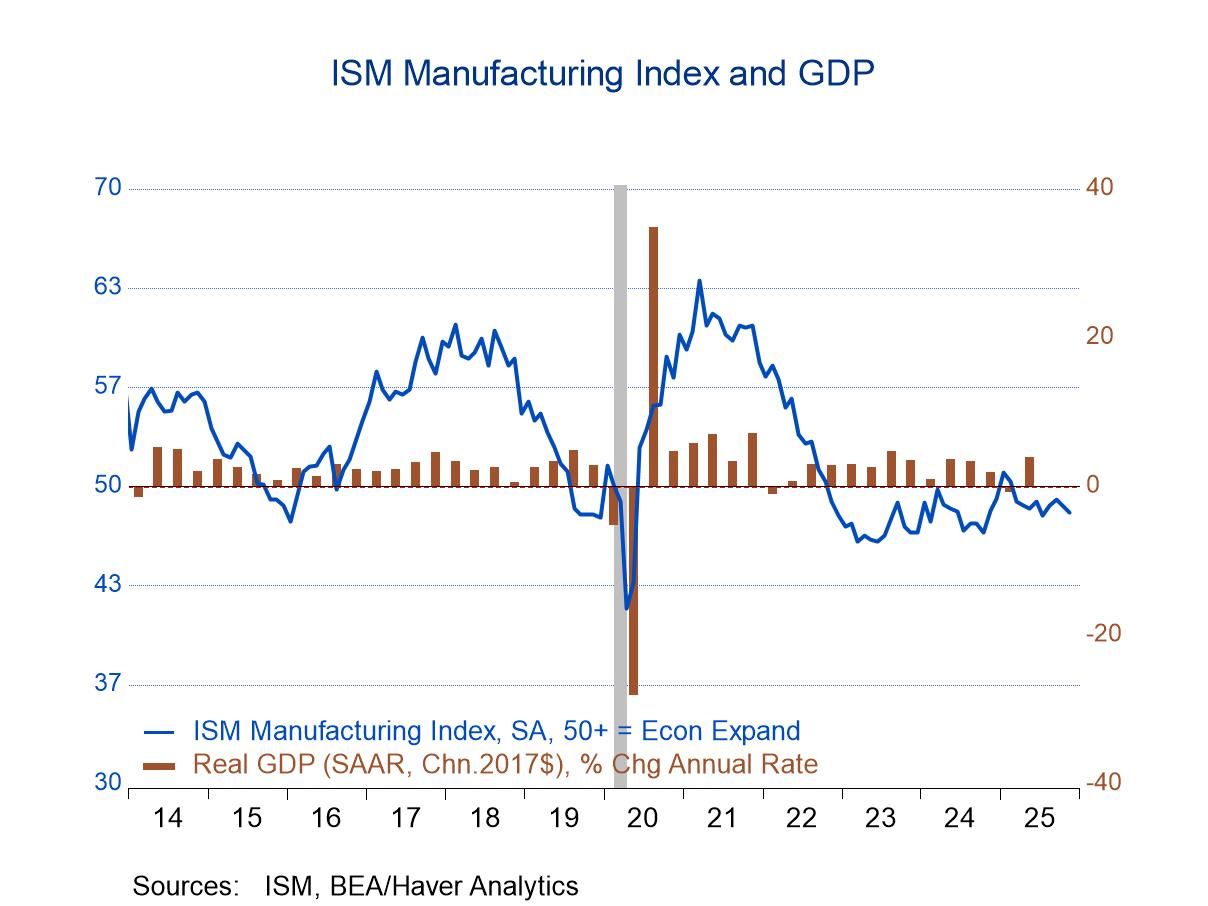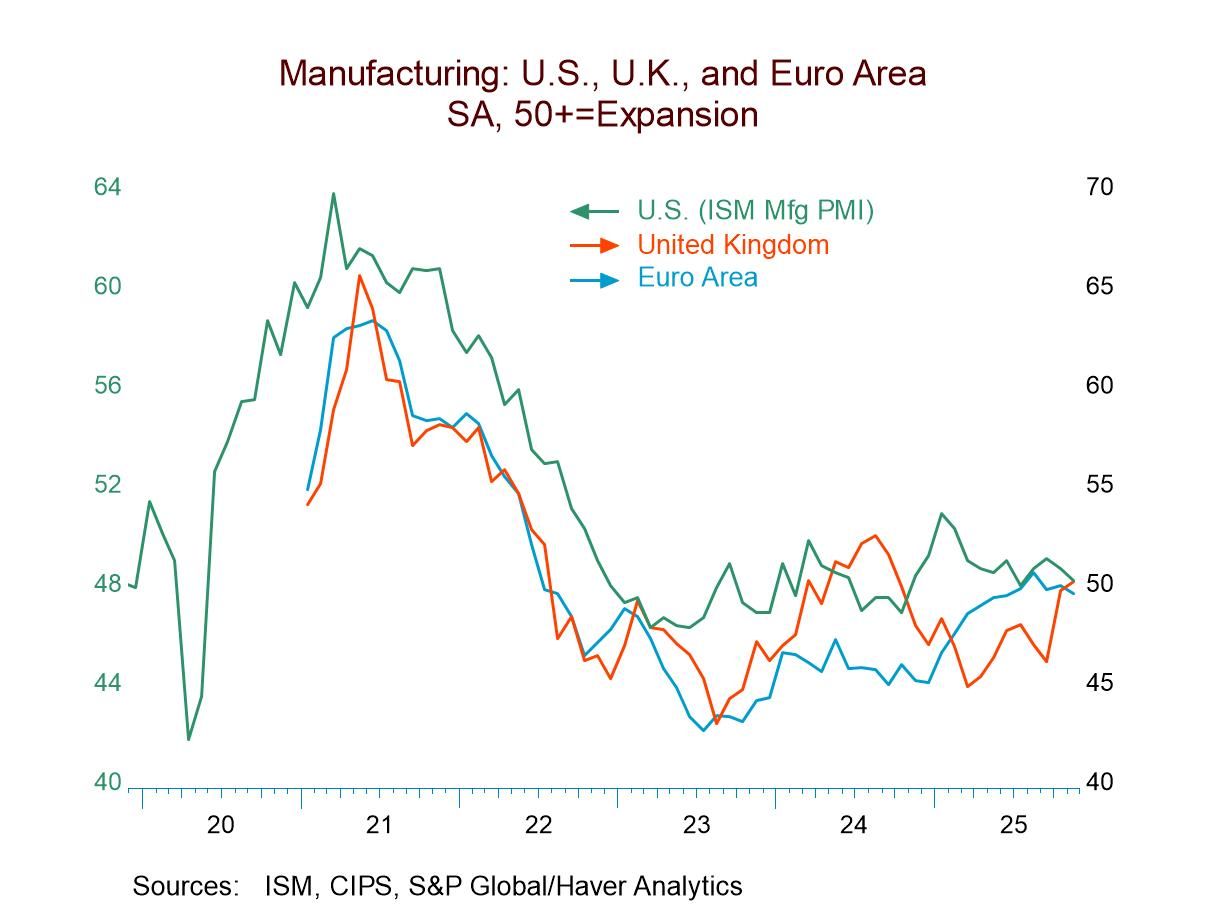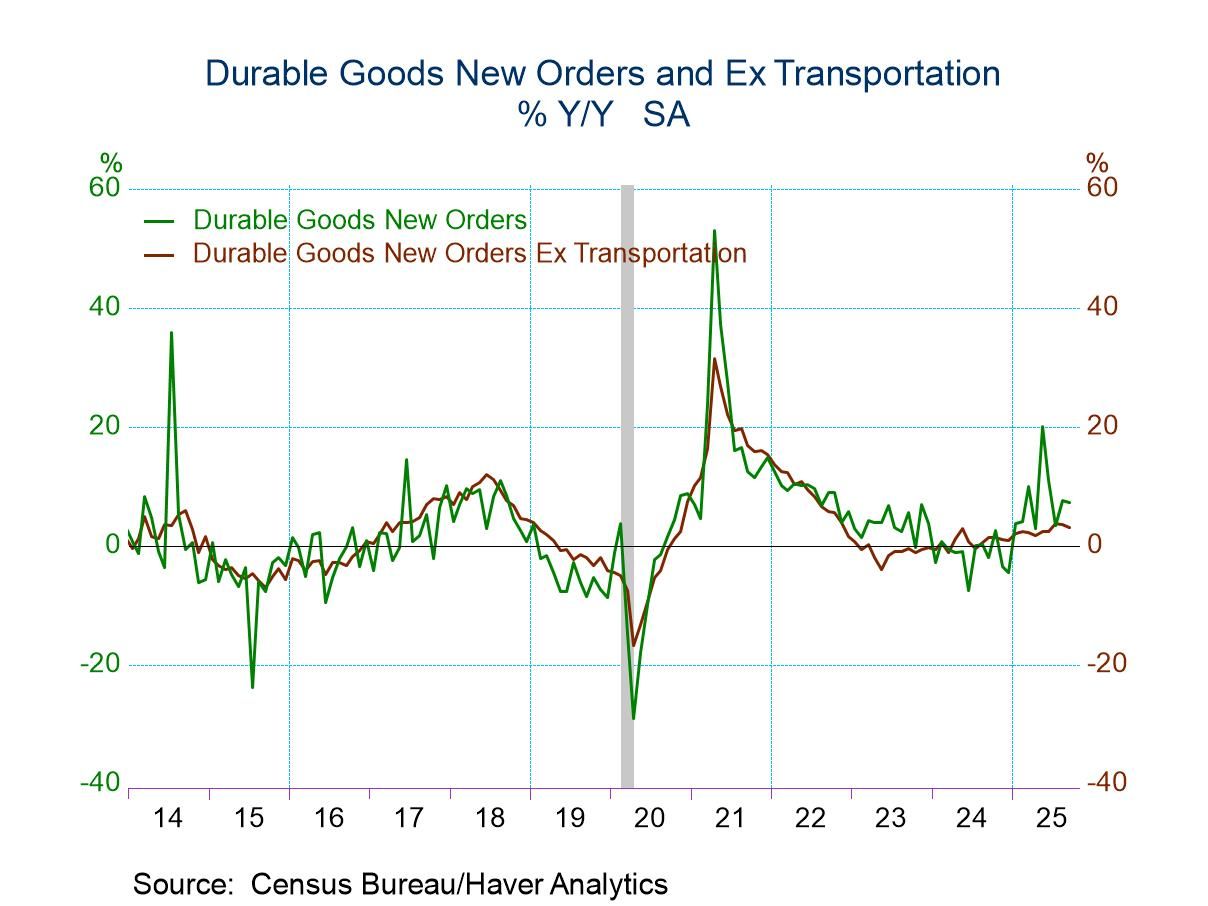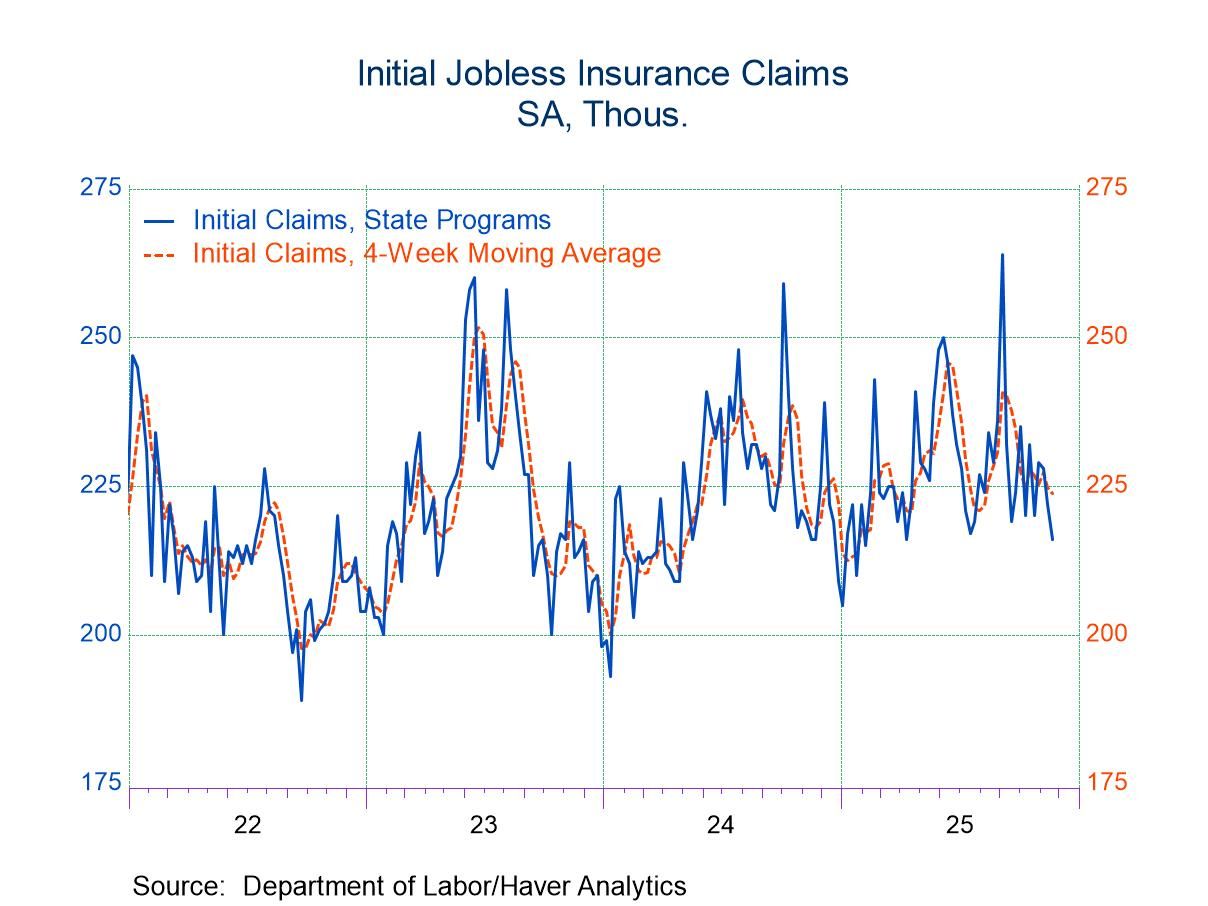 Global| Jun 17 2011
Global| Jun 17 2011Euro-Area Trade Goes With The Flow But Still Slows
Summary
Euro-Area trade flows have lost some momentum, but the Zone-wide deficit continues to get larger. Import growth exceeds export growth over 12-months and 6-months but has given ground over 3-months. Still it’s not enough time to tell [...]
 Euro-Area trade flows have lost some momentum, but the Zone-wide deficit continues to get larger. Import growth exceeds
export growth over 12-months and 6-months but has given ground over 3-months. Still it’s not enough time to tell if the
trend is actually shifting. There has been as shift for trade overall as well for MFG goods alone.
Euro-Area trade flows have lost some momentum, but the Zone-wide deficit continues to get larger. Import growth exceeds
export growth over 12-months and 6-months but has given ground over 3-months. Still it’s not enough time to tell if the
trend is actually shifting. There has been as shift for trade overall as well for MFG goods alone.
Euro-Area trade flows have slowed sharply in March but have perked up in April. As a result the Yr/Yr flow over the past 12-months is pretty much the same as it was 12-months ago. Overall trade flow speed is being maintained in the Zone in the aggregate.
Still raw materials flows have slowed more for exports than for imports, And manufacturing trade on both sides has slowed rather markedly. Exports are down to a 6.4% 3-month growth rate annualized from 14.5% Yr/Yr. On the import side flows have slowed for MFG to 1.1% over 3-months annualized from 12.7% Yr/Yr.
The slowing that we are seeing in other parts of the EMU economy are being revealed in the MFG flows which have demonstrated a sharp pull back. This pull back is hidden by the continued strength in other trade components and especially by raw materials. Food exports remain strong in the Zone while the import flows of foods have slowed.
On balance the trade picture seems benign in the aggregate. But the underlying export and import trends for manufacturing alone suggest that there is a slowing in progress and it seems to be hitting imports harder. That speaks to a gradual loss in domestic demand within the zone itself.
| Euro-Area Trade trends for goods | ||||||
|---|---|---|---|---|---|---|
| M/M% | %SAAR | |||||
| Apr-11 | Mar-11 | 3M | 6M | 12M | 12M Ago | |
| Balance* | € (2,908) | € (2,178) | € 165 | € (2,675) | € 1,755 | € (4,388) |
| Exports | ||||||
| All Exp | 0.6% | 0.6% | 11.5% | 15.4% | 16.7% | 17.6% |
| Food and Drinks | -4.4% | 4.8% | 12.9% | 19.2% | 14.8% | 9.2% |
| Raw materials | -1.3% | 0.3% | -8.0% | 10.3% | 16.6% | 31.0% |
| Other | 1.1% | 0.3% | 12.0% | 15.3% | 16.9% | 18.0% |
| MFG | -1.8% | 0.9% | 6.4% | 7.9% | 14.5% | 14.1% |
| IMPORTS | ||||||
| All IMP | 1.1% | 0.3% | 9.0% | 25.6% | 20.5% | 18.5% |
| Food and Drinks | -1.5% | 0.4% | -4.3% | 14.7% | 15.5% | 2.3% |
| Raw materials | 0.2% | 2.5% | 26.8% | 44.1% | 32.9% | 45.7% |
| Other | 1.3% | 0.1% | 8.9% | 25.3% | 20.2% | 18.6% |
| MFG | -2.6% | 0.7% | 1.1% | 9.4% | 12.7% | 16.3% |
| *Eur mlns; mo or period average (SA, WDA) | ||||||
Robert Brusca
AuthorMore in Author Profile »Robert A. Brusca is Chief Economist of Fact and Opinion Economics, a consulting firm he founded in Manhattan. He has been an economist on Wall Street for over 25 years. He has visited central banking and large institutional clients in over 30 countries in his career as an economist. Mr. Brusca was a Divisional Research Chief at the Federal Reserve Bank of NY (Chief of the International Financial markets Division), a Fed Watcher at Irving Trust and Chief Economist at Nikko Securities International. He is widely quoted and appears in various media. Mr. Brusca holds an MA and Ph.D. in economics from Michigan State University and a BA in Economics from the University of Michigan. His research pursues his strong interests in non aligned policy economics as well as international economics. FAO Economics’ research targets investors to assist them in making better investment decisions in stocks, bonds and in a variety of international assets. The company does not manage money and has no conflicts in giving economic advice.






